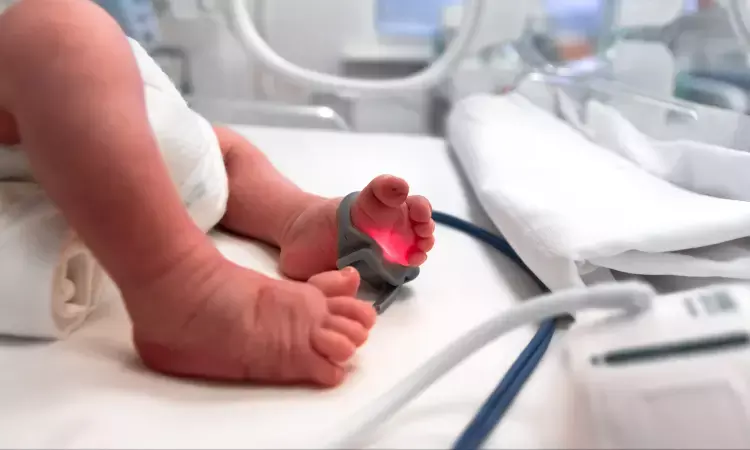- Home
- Medical news & Guidelines
- Anesthesiology
- Cardiology and CTVS
- Critical Care
- Dentistry
- Dermatology
- Diabetes and Endocrinology
- ENT
- Gastroenterology
- Medicine
- Nephrology
- Neurology
- Obstretics-Gynaecology
- Oncology
- Ophthalmology
- Orthopaedics
- Pediatrics-Neonatology
- Psychiatry
- Pulmonology
- Radiology
- Surgery
- Urology
- Laboratory Medicine
- Diet
- Nursing
- Paramedical
- Physiotherapy
- Health news
- Fact Check
- Bone Health Fact Check
- Brain Health Fact Check
- Cancer Related Fact Check
- Child Care Fact Check
- Dental and oral health fact check
- Diabetes and metabolic health fact check
- Diet and Nutrition Fact Check
- Eye and ENT Care Fact Check
- Fitness fact check
- Gut health fact check
- Heart health fact check
- Kidney health fact check
- Medical education fact check
- Men's health fact check
- Respiratory fact check
- Skin and hair care fact check
- Vaccine and Immunization fact check
- Women's health fact check
- AYUSH
- State News
- Andaman and Nicobar Islands
- Andhra Pradesh
- Arunachal Pradesh
- Assam
- Bihar
- Chandigarh
- Chattisgarh
- Dadra and Nagar Haveli
- Daman and Diu
- Delhi
- Goa
- Gujarat
- Haryana
- Himachal Pradesh
- Jammu & Kashmir
- Jharkhand
- Karnataka
- Kerala
- Ladakh
- Lakshadweep
- Madhya Pradesh
- Maharashtra
- Manipur
- Meghalaya
- Mizoram
- Nagaland
- Odisha
- Puducherry
- Punjab
- Rajasthan
- Sikkim
- Tamil Nadu
- Telangana
- Tripura
- Uttar Pradesh
- Uttrakhand
- West Bengal
- Medical Education
- Industry
Intermittent pulse oximetry monitoring as good as continuous monitoring in kids with stabilized bronchiolitis

Canada: According to the results of a recent original investigation, there is no difference in the cost involved for intermittent and continuous pulse oximetry in considering societal and health care perspectives.
Furthermore, the research recommends that intermittent monitoring be used in hospitalized infants with stabilized bronchiolitis.
These findings are published in JAMA Network.
It is already known that pulse oximetry is a noninvasive technology and is a critical supportive care of infants with bronchiolitis (hospitalized).
Pulse oximetry intermittently is recommended rather than continuously in stable, nonhypoxic hospitalized infants with bronchiolitis. Considering decision making, other factors play a key role, including costs and preferences ( both patient and family).
There is a lack of data in this research aspect, and none of the pediatric studies has examined the cost-effectiveness intermittent vs continuous pulse oximetry strategies in bronchiolitis management.
The key question here is,
Is intermittent pulse oximetry more cost-effective compared to continuous monitoring in stabilized bronchiolitis children?
This question is answered by the team of researchers led by Dr Moretti from the Clinical Trials Unit at Ontario Child Health Support Unit from The Hospital for Sick Children.
The conclusive study points are:
• The study included data from 229 infants aged four weeks to 24 months, 59.4 % boys and 40.6 % girls.
• After stabilisation, these infants were hospitalized with bronchiolitis, with or without supplemental oxygen.
• The study included direct and indirect health costs. (in 2021 Canadian dollars.)
• The trial data were used to obtain data on health resources, cost and outcomes.
• The intervention in the study was Intermittent (every 4 hours) vs continuous pulse oximetry , oxygen saturation target of 90% or higher.
• Costs and incremental costs were the primary outcomes measured.
• In the intermittent group, the mean societal costs per patient were $6879.
• The mean societal costs recorded were $7428 in the continuous group.
• The mean incremental cost was −$548 with a 95% Confidence Interval.
• The cost of the Mean health care system per patient was $4195 and $4716 in the intermittent and continuous groups, respectively.
• There was a similarity in the mean effect measure of the length of stay between the two groups at 37.4 hours and 38.5 hours in the intermittent and continuous groups, respectively.
The researchers explained that our study was a prospective economic evaluation, and we measured both societal and healthcare system costs. There were similarities in costs for both intermittent and continuous pulse oximetry. The clinical outcomes between monitoring strategies are comparable. Intermittent monitoring is favoured in practical considerations. So our study results offer more insight into the topic by providing additional data and supporting intermittent monitoring in hospitalized infants with stabilized bronchiolitis.
Further reading:
Moretti ME, Jegathisawaran J, Wahi G, et al. Cost-effectiveness of Intermittent vs Continuous Pulse Oximetry Monitoring in Infants Hospitalized With Stabilized Bronchiolitis. JAMA Netw Open. 2022;5(11):e2243609.
BDS, MDS in Periodontics and Implantology
Dr. Aditi Yadav is a BDS, MDS in Periodontics and Implantology. She has a clinical experience of 5 years as a laser dental surgeon. She also has a Diploma in clinical research and pharmacovigilance and is a Certified data scientist. She is currently working as a content developer in e-health services. Dr. Yadav has a keen interest in Medical Journalism and is actively involved in Medical Research writing.
Dr Kamal Kant Kohli-MBBS, DTCD- a chest specialist with more than 30 years of practice and a flair for writing clinical articles, Dr Kamal Kant Kohli joined Medical Dialogues as a Chief Editor of Medical News. Besides writing articles, as an editor, he proofreads and verifies all the medical content published on Medical Dialogues including those coming from journals, studies,medical conferences,guidelines etc. Email: drkohli@medicaldialogues.in. Contact no. 011-43720751


